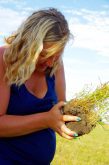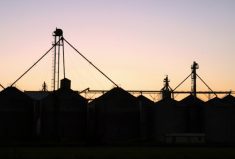A team of scientists in the United Kingdom and Bangladesh has taken an unusual step in their bid to get ahead of a deadly cereal fungus that has recently surfaced in Bangladesh.
They have posted raw genetic data for the wheat blast pathogen on a new website — wheatblast.net. And they are inviting others to do the same.
While not unheard of, research collaborations have become far less common in recent times. Threats such as wheat blast however, create a certain urgency.
Read Also

June’s fast-moving grain markets
Summing up the grain markets: June 2025 was an interesting month for canola prices and geopolitics stole the spotlight from grain market specifics
The pathogen that causes wheat blast fungus surfaced in Bangladesh in February, making it the first sighting of the dreaded disease in Asia.
According to a release by the John Innes Centre, the wheat blast disease has so far caused up to 90 per cent yield losses in more than 15,000 ha. Researchers fear it could spread to other wheat-growing areas in South Asia.
The stakes are high. Wheat is the second major food source in Bangladesh after rice.
The researchers are hoping that the website, together with an accompanying Facebook page, will provide a hub for information, collaboration and comment.
In publicizing their move, Sophien Kamoun, project leader with the Sainsbury Laboratory in Norwich, said it is time to change the research culture in the name of global food security.
“I have a beef with the way that research is typically done. We need a fundamentally new approach to sharing genetic data for emerging plant diseases,” he said. “We need to generate and make data public more rapidly and seek input from a larger crowd because, collectively, we are better able to answer questions.
We couldn’t agree more.



















